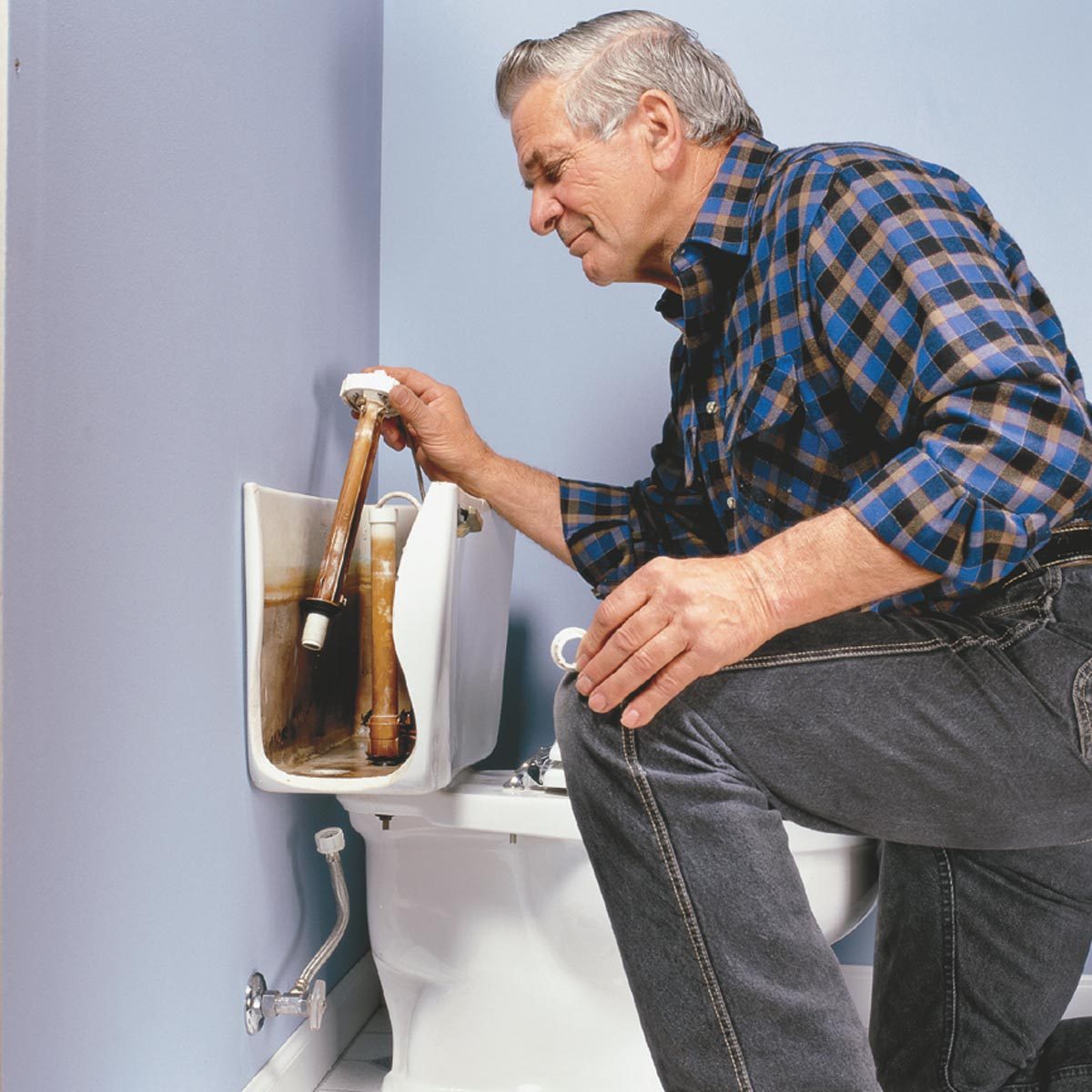Get a stronger flush—and a lower water bill. Find out how to fix things if your toilet keeps running.
1 hour or less
Beginner
$0 - $20
Introduction
Learn the simple four-step strategy that solves 95 percent of toilet flush problems. Stop water from constantly running, give a wimpy flush a boost, and solve other common problems quickly and easily.
The basics of how a toilet works haven’t changed much in the last 80+ years. After a flush, water fills the toilet tank, lifting a float that shuts off the water when it reaches a certain level. A lever still opens a flapper to cause the flush, falling back into place when the water level drops.
So, it should come as no surprise that we still have to deal with the same common flush problems from time to time. Sometimes the flush isn’t powerful enough, the toilet keeps running, and or the bowl doesn’t refill.
What causes a running toilet?
When water escapes from the toilet tank or a component inside the toilet is leaking, the toilet will continue to run. Generally, this is caused by a leaking flapper, a defective fill valve, or an incorrectly sized overflow pipe. This article will walk you through the solutions to each of these issues, which are not only simple to apply but will also result in immediate savings on your next water bill.
The good news is that most of these problems are easy to fix, without having to replace your toilet. You can complete the first three steps in five minutes. That’ll solve most problems. The fourth step is usually easy too, but not always. More on this later. These steps work for most toilets but not for pressure-assist models. Here’s what to do if your toilet won’t stop running.
Tools Required
- Cutting pliers
- Pliers
- Rubber gloves
Materials Required
- Replacement fill valve
- Toilet flapper
Watch How To Stop a Running Toilet and Fix Common Flush Problems
Project step-by-step (6)
Check the fill tube
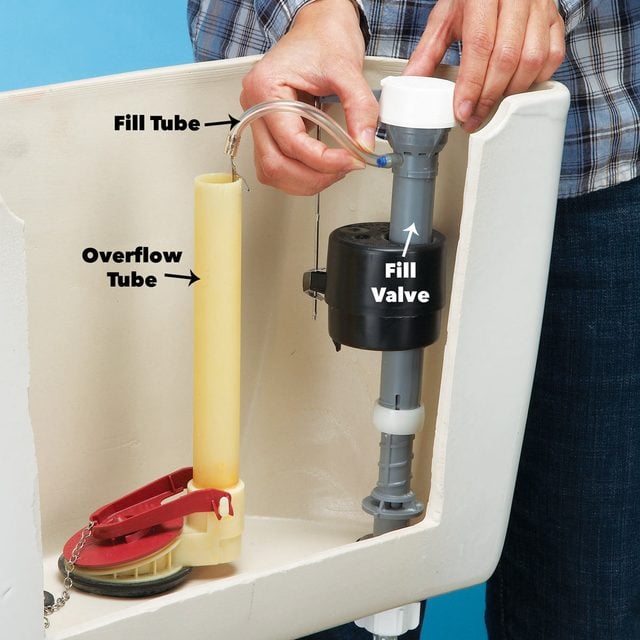
- For a toilet overflow tube problem, remove the tank lid and find the fill tube. It’s a small flexible tube that runs from the fill valve to the toilet overflow tube. While the tank refills, this tube squirts enough water down the toilet overflow tube to refill the bowl after the completed flush.
- If this tube falls off or the water stream misses the overflow tube, the bowl won’t fill and your next flush will be wimpy (that is, won’t develop a strong siphon).
- Reattach the fill tube and push it firmly onto the fill valve. Make sure it perches about 1 in. above the rim of the overflow tube and that the fill tube sends water into the toilet overflow tube.
- Flush the toilet and watch the water stream to make sure it goes down the toilet overflow tube.
Adjust the fill height by checking the float

The water level in the tank is controlled by an adjustable float. A float that’s set too low produces a weak flush; if it’s set too high, water spills into the toilet overflow tube and the fill valve won’t shut off. The toilet keeps running.
- Look for the fill level mark on the inside back of the tank and mark it on the toilet overflow tube so you can see it more easily. If you can’t find it, measure down about 1 in. on the overflow tube and make a mark.
- Then, flush the toilet and see if the water reaches and stops at that mark. If not and the toilet keeps running, adjust the toilet tank float up or down. If you have an old toilet, you’ll have to bend the brass rod that connects to the float ball to make adjustments. But with newer toilets, you usually turn a screw or slide a clip along a rod.
- Flush the toilet after each adjustment. Keep adjusting the float until the water shuts off at the proper level.
Replace the fill valve
Occasionally, if the fill valve simply won’t shut off, which means that it’s defective, and you’ll have to replace it.
- Turn the water supply off at the shutoff under the tank.
- Disconnect the water supply line, unscrew the fill valve locknut and lift out the old fill valve.
- Insert the new fill valve into the tank according to the instruction sheet and tighten the locknut a half turn past hand tight.
- If the fill valve is at its maximum height, but the overflow pipe is still higher than the critical level mark, shorten the overflow pipe using a hacksaw so it’s one inch lower than the critical level mark on the fill valve.
- Attach one end of the new fill tube to the fill valve nipple and the other to the enclosed angle adapter (shorten the tube to avoid kinks, if necessary).
- Clip the angle adapter onto the overflow pipe.
- Finish the installation by attaching the flapper chain to the flush lever.
- Turn on the water and test-flush the toilet.
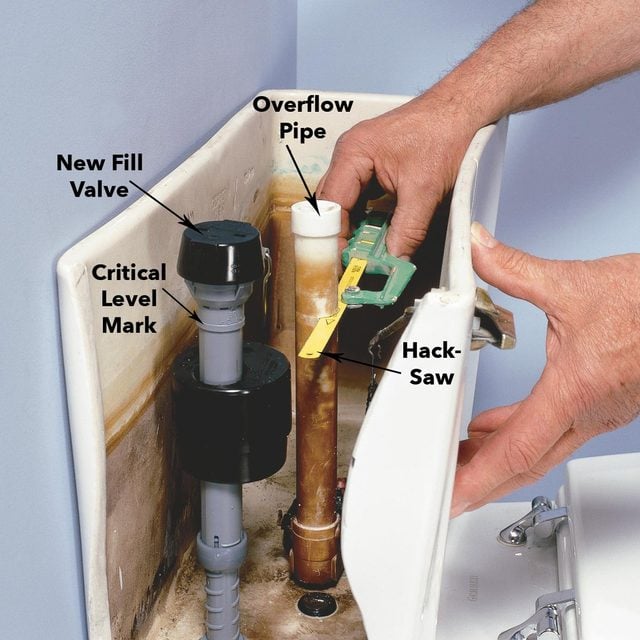
Adjust the flush handle/flapper chain
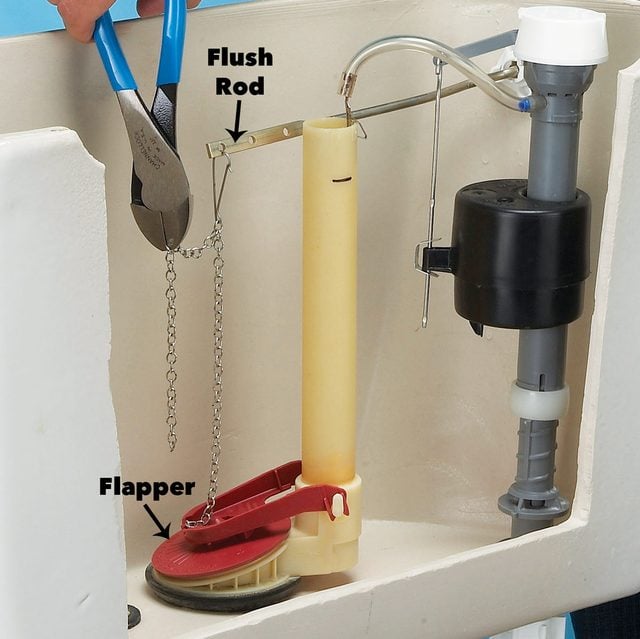
A chain that’s too short or tangled won’t allow the flapper to close and water will continue to leak into the bowl. This causes the fill valve to cycle on and off to refill the tank. A chain that’s too long, or a flush rod that hits the tank lid, won’t open the flapper wide enough to stay open for the full flush. You’ll find yourself having to hold the lever to complete a good flush.
- To avoid low water in the toilet bowl and other problems, adjust the linkage in the chain to leave only a slight bit of slack when the flapper is closed. Cut off the excess chain at the rod to leave only about an inch extra to reduce the potential for tangles.
- Then put the tank lid back on and make sure the flush rod doesn’t strike the lid when you press the lever. If it does, bend it down slightly and readjust the chain.
Replace the Flapper
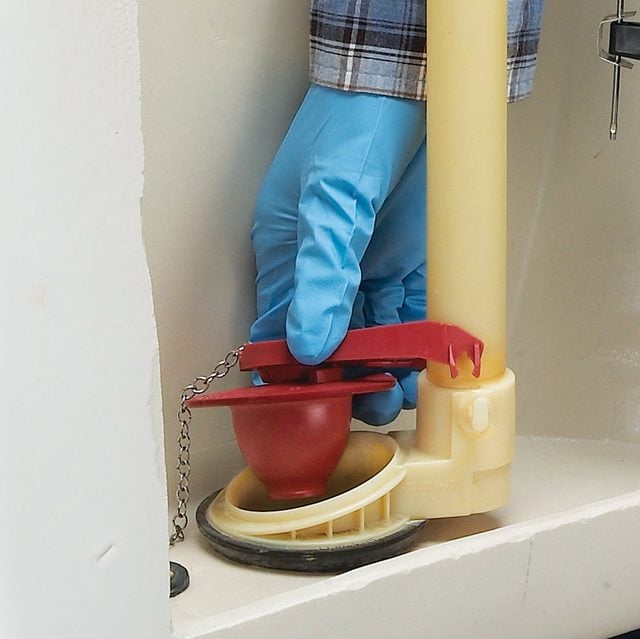
If you’ve completed the first three steps and your toilet keeps running, chances are you have a worn-out flapper.
- Turn off the water, remove the old flapper and take it to the store to find an exact replacement. Most flappers snap over ears on the overflow tube. Others have a ring that slips over the tube.
- You may not find an exact match. The range of flapper styles has mushroomed over the last 20 years, and you may find 15 to 20 flapper options on the store shelf. If you can’t find an exact replacement, try the closest one and pick up a universal type as well. They’re cheap, and the extra one just might save you a second trip to the store! (Avoid the “adjustable” types unless you’re replacing an adjustable one.)
- Install the new flapper and make sure it opens and closes freely.
- Test the new flapper. If the toilet keeps running or runs intermittently, you’re not getting a good seal. Try a different flapper if the toilet won’t stop running.
- If you just can’t find a flapper that seals, consider replacing the entire toilet overflow tube/flapper. On most toilets (two-piece), this means removing the tank. It’s not difficult and you don’t need special tools. It’ll take you about an hour, and you’ll avoid that expensive plumber service call.
Fixing Common Toilet Problems
Whether you need to unclog the toilet or are facing a different set of toilet troubles, here are some common fixes for the porcelain problems you may be encountering.




















